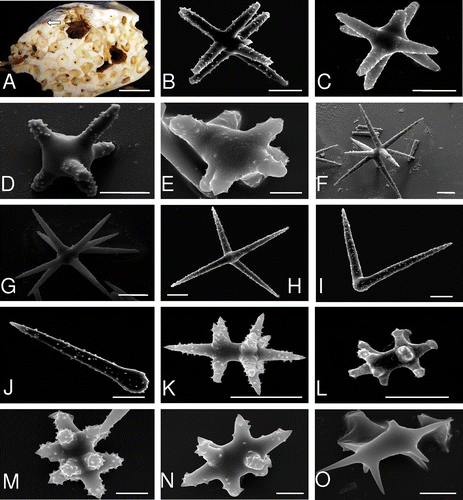Figures & data
Figure 1 A, fragment of a branch of Corallium sp. excavated by Thoosa midwayi n. sp. (holotype). The arrow indicates a papilla. B, large amphiaster of the holotype with 3‐4 conical rays. C, large amphiaster (other specimen). D, modified amphiaster of the holotype. E, modified amphiaster (other specimen). F, amphiaster of the holotype with acuminate tips. G, amphiaster with acuminate tips (other specimen). H–J, intermediate forms of oxyasters of the holotype, deriving from the straight amphiasters. K, small spiny amphiaster of the holotype. L, rare, very small amphiaster of the holotype. M,N, stout amphiasters ending with terminal groups of spines (other specimen). O, young form of amphiaster (other specimen). Scale bars: A, 7 mm. B, E, F, L–O, 10 µm. C, D, G, H, I, J, K, 20 µm.
